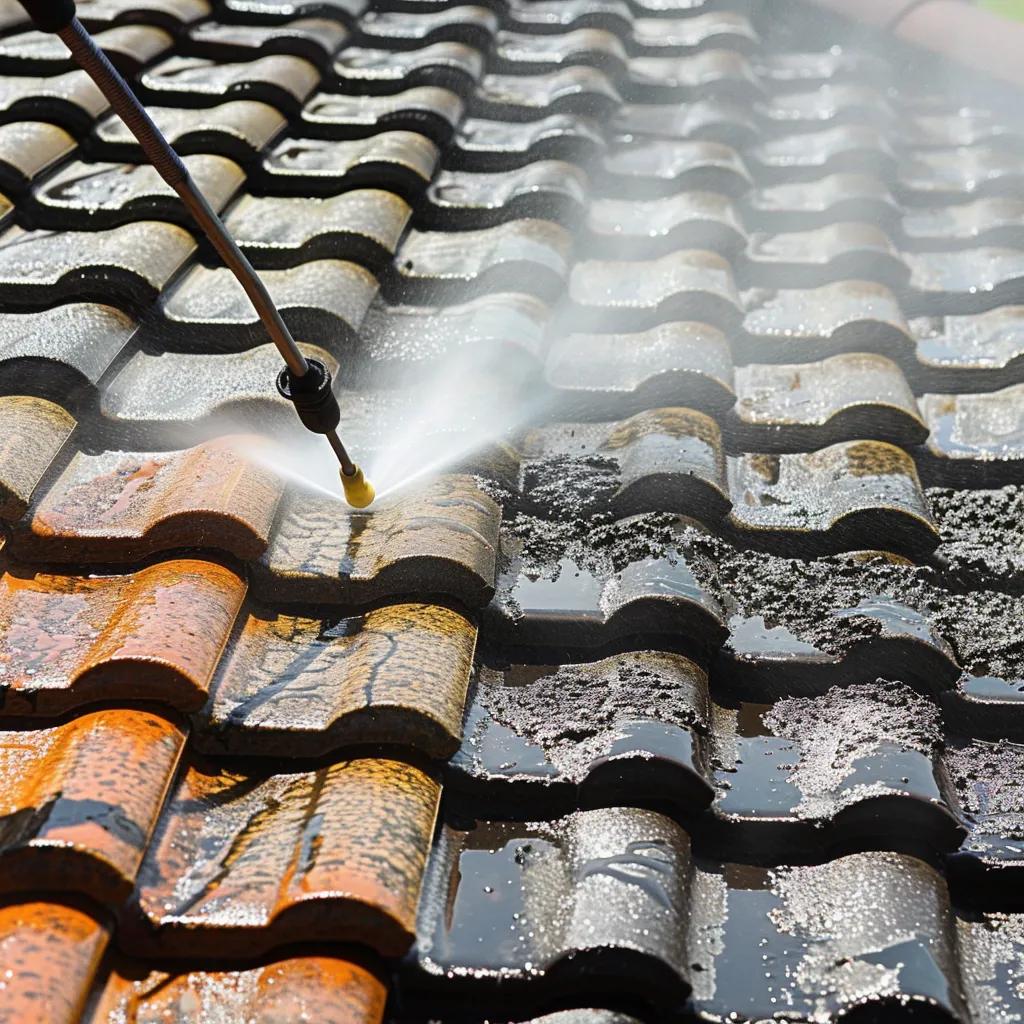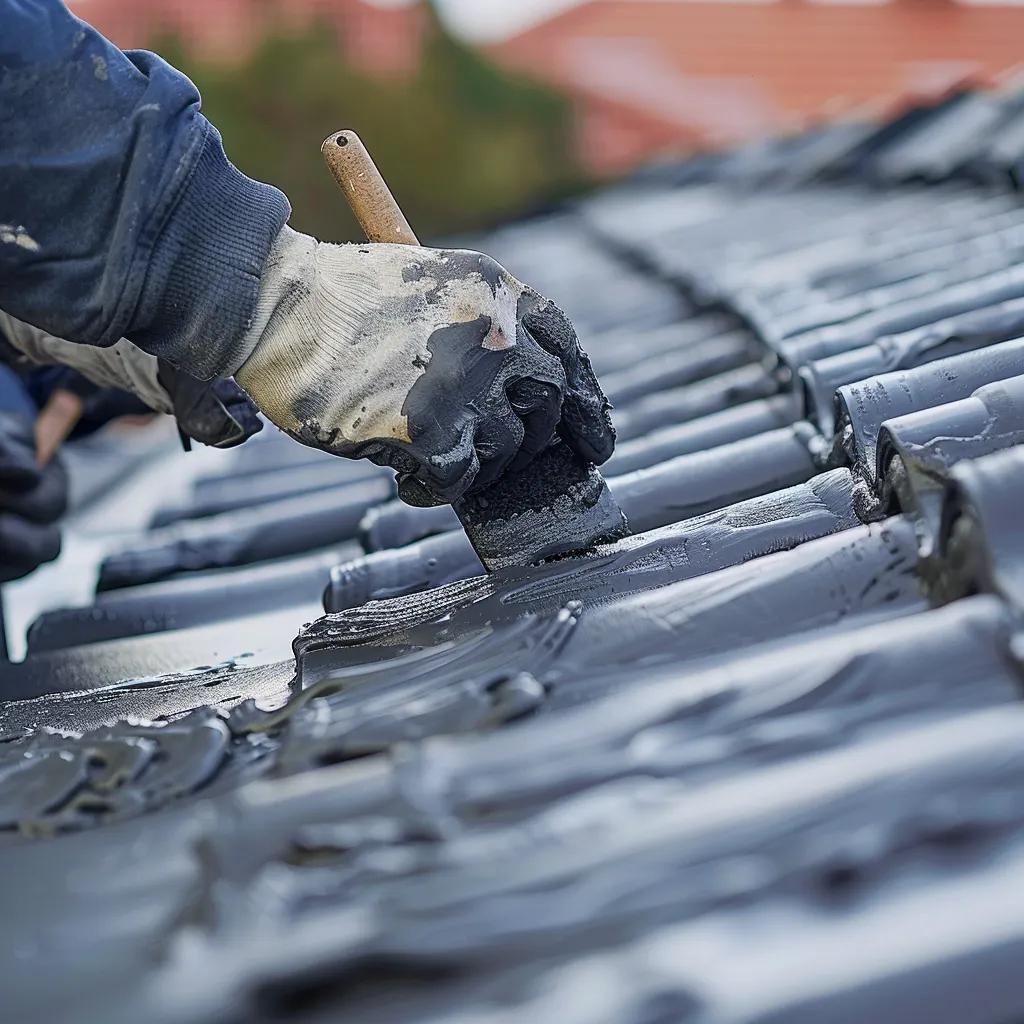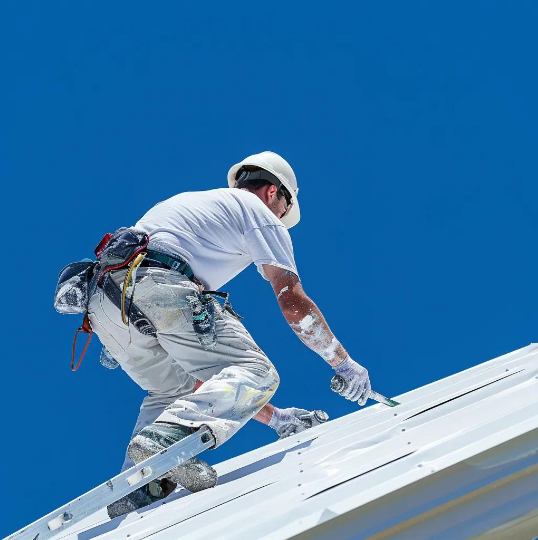A properly executed roof painting process transforms tired roofing into a durable, weather-resistant shield that enhances curb appeal and energy efficiency. Adelaide Roofing and Construction leverages local expertise and premium materials to inspect, clean, repair, prime, coat, and maintain every roof with precision. In this guide, you will discover:
- Step-by-step inspection criteria and damage identification
- Tailored cleaning and surface-preparation techniques
- Key repair and sealing methods for lasting adhesion
- Climate-adapted primer and paint selection for Adelaide conditions
- Professional application protocols for multiple coats and safety
- Final quality checks and maintenance strategies to extend roof lifespan
By following these six essential steps, homeowners can protect their investment, boost property value, and enjoy a fully restored roof that stands up to South Australia’s unique elements.
What Is the First Step in the Roof Painting Process? Comprehensive Roof Inspection and Assessment
Comprehensive roof inspection and assessment define the foundation of a successful roof painting process by revealing surface damage, material type, and structural needs. Adelaide Roofing and Construction’s certified inspectors evaluate each tile, seam, and metal sheet to determine cleaning requirements, repair scope, and paint compatibility. This process ensures accurate planning, cost estimation, and the selection of appropriate restoration techniques that protect against future corrosion and leaks.
How Does Adelaide Roofing and Construction Identify Roof Damage and Material Types?
Adelaide Roofing and Construction begins with a visual and tactile survey of the entire roof surface, checking for hairline cracks, chipped tiles, and rust spots. Inspectors tap tiles to detect loose bedding, use moisture meters to locate hidden leaks, and catalog paint delamination on metal profiles. Recording these findings yields a detailed assessment report that guides cleaning intensity, repair materials, and primer selection.
Why Is Roof Type Important for Painting Preparation?
Metal roofs, concrete tiles, terracotta tiles and Colorbond panels each demand tailored preparation to optimise adhesion and durability. Metal surfaces require rust-neutralising treatments; porous concrete tiles need deep cleaning to remove algae; terracotta demands acid wash for efflorescence removal; and Colorbond benefits from manufacturer-approved primers. Recognising these distinctions at the inspection stage prevents premature paint failure and uneven finishes.
How Is Roof Cleaning and Surface Preparation Done Before Painting?

Effective surface preparation combines pressure washing, problem-treatment and equipment selection to deliver a contaminant-free substrate. Adelaide Roofing and Construction uses variable-pressure washers to blast moss, algae, and old paint residues from roofing materials, ensuring primer and paint bond firmly to a clean foundation. This stage eliminates biological growth and surface oxidation, directly improving coating life and uniformity.
Before detailing the cleaning tools and methods, consider the following pressure-washing advantages:
- High-velocity water removes embedded debris without harsh chemicals.
- Adjustable nozzles protect fragile tiles while eradicating moss.
- Hot-water capabilities dissolve grease and oxidation on metal profiles.
These techniques significantly reduce surface contaminants, setting the stage for effective primer adhesion and long-lasting protection.
What Are the Best Pressure Washing Techniques for Different Roof Types?
Metal roofs benefit from a medium-pressure, hot-water wash that melts rust and oil stains, followed by an iron-removal solution. Concrete tiles require low-pressure soft washes with biodegradable detergents to avoid fracturing brittle edges. For Colorbond, a gentle rinse cleans without stripping protective coatings.
How Are Moss, Algae, and Rust Treated Before Painting?
Moss and algae are eliminated using a biodegradable algaecide applied after washing, then left to break down spores. Rust spots on galvanised steel are scrubbed with a wire brush, treated with a rust converter, and rinsed before primer application. This three-stage approach ensures all biological and chemical contaminants are neutralised.
Which Tools and Materials Are Used in Roof Cleaning?
Below is a comparative overview of essential preparation equipment:

This table highlights the tailored tools and supplies that ensure a pristine roof surface, paving the way to precise repairs and coating steps.
What Roof Repairs and Surface Sealing Are Essential Before Painting?

Essential repairs and sealant applications restore structural integrity, prevent water ingress, and promote paint adhesion. Adelaide Roofing and Construction addresses cracks, loose tiles, and flashing gaps to create a unified substrate for primer and paint. By repairing defects first, the new coating can deliver optimal protection and aesthetic results without underlying failures.
How Are Cracks Fixed and Tiles Replaced or Re-bedded?
Hairline cracks in concrete tiles are filled with polymer-modified cement grout, while broken tiles are replaced with matching profiles and re-bedded in fresh mortar. Loose ridge and hip tiles are re-strapped and re-beded, ensuring consistent roof geometry. These structural fixes eliminate water pathways and settle the roof into a stable canvas for painting.
Why Is Applying Sealants Important for Paint Adhesion?
High-performance sealants fill micro-gaps in metal seams, tile junctions, and flashing edges, creating a uniform, non-porous barrier. Sealants enhance paint bonding by leveling surface irregularities and preventing moisture migration beneath the coating. This sealing step directly contributes to longer-lasting finishes and reduces maintenance needs.
What Are Common Roof Problems Addressed During Repairs?
Typical issues include rust corrosion on galvanised sheets, peeling paint on aged metal, cracked mortar beds, and hairline leaks around penetrations. By proactively resolving these defects, Adelaide Roofing and Construction prevents premature coating delamination and water damage.
How Do You Choose the Right Paint and Primer for Adelaide’s Climate and Roof Types?
Selecting paint and primer that withstand South Australia’s intense sun, temperature swings, and occasional storms is important to a durable roof painting process. Adapting to material-specific needs whether acrylic, elastomeric, or silicone coatings, ensures optimal UV protection, waterproofing, and flexibility.
Below is a comparative analysis of paint options for local conditions:

Roof Painting and Energy Efficiency
Heat-reflective coatings can significantly reduce roof surface temperatures, potentially lowering energy consumption and improving indoor comfort. These coatings work by reflecting a portion of the sun's rays, reducing heat absorption by the roof material.
What Are the Differences Between Acrylic, Elastomeric, and Silicone Roof Paints?
Acrylic paints offer economical UV protection and elasticity for minor substrate movement. Elastomeric coatings thicken into a waterproof membrane that adapts to thermal expansion. Silicone systems provide outstanding reflectivity and hydrophobic surfaces, shedding moisture and lowering heat absorption.
How Does Primer Extend the Longevity of Roof Paint?
High-adhesion primers penetrate porous tiles and bond to cleaned metal, creating a consistent anchor for topcoats. Primers neutralise alkaline substrates, block tannin bleed-through on terracotta, and improve overall coating cohesion, resulting in extended roof paint lifespan.
Which Paint Brands and Products Are Recommended for Adelaide Roofs?
Adelaide Roofing and Construction recommends Dulux AcraTex Acratex Cool Roof for heat-reflective performance, Shieldcoat Roofbond Premium for elastomeric sealing, and Nutech Super 1000 for durable acrylic finishes. These premium systems are backed by manufacturer warranties and proven longevity in local conditions.
What Is the Professional Roof Painting Application Process? Step-by-Step Guide
A professional roof painting application process follows a controlled sequence of primer, intermediate, and topcoats, combined with strict safety protocols. Adelaide Roofing and Construction’s crews apply each layer using calibrated sprayers and rollers to ensure uniform thickness, seamless coverage, and minimal overspray. This approach maximises durability, resin cohesion, and weather resistance.
- Primer Coat – Applied at 6–8 m²/L to seal and uniform substrate porosity.
- Intermediate Coat – Builds film thickness at 4–6 m²/L; enhances adhesion.
- Topcoat – Provides UV-stable finish at 5 m²/L; resists chalking and fading.
These calibrated coat definitions ensure each layer delivers its designed performance while maintaining overall system integrity and aesthetic consistency.
How Are Multiple Coats Applied for Maximum Durability?
Crews maintain wet-film gauges to confirm each coat meets specified thickness. After primer curing (2–4 hours), technicians apply intermediate coats, allowing full cross-linking before the final topcoat. This layering technique builds a robust composite film that withstands thermal movement and UV degradation.
What Are the Advantages of Spraying vs. Rolling Paint?
Spraying yields uniform coverage on ridged profiles and complex hips, reducing brush marks and ensuring efficient application in hard-to-reach areas. Rolling provides precise control on edges and valleys, minimising overspray and waste. Combining both methods optimises finish quality and resource use.
How Long Should Each Coat Dry and What Are the Safety Precautions?
Each coat requires 2–6 hours of drying time depending on temperature and humidity. Technicians follow strict harness protocols, non-conductive scaffolding, and fall-arrest anchors to ensure crew safety. Maintaining dry, wind-calm conditions prevents premature surface contamination and film defects.
How Is the Final Inspection Conducted and What Maintenance Extends Roof Paint Longevity?
Final inspection and ongoing maintenance are essential to lock in performance and detect early wear signs. Adelaide Roofing and Construction’s quality-assurance team reviews film thickness, adhesion, colour consistency, and edge sealing to certify a flawless finish. Routine upkeep extends coating life and preserves protective benefits.
What Quality Checks Ensure a Flawless Finish?
Inspectors use wet-film thickness gauges, adhesion tape tests, and gloss meters to verify each layer meets specification. Edge seams and flashings are examined for complete sealant coverage and paint penetration. This rigorous audit confirms the roof will withstand environmental stresses.
What Are the Best Maintenance Practices for Painted Roofs?
Regular gutter clearing, soft-wash cleaning every 3–5 years, touch-up of sealant joints, and annual visual roof surveys prevent debris buildup and micro-cracking. Proactive care sustains watertight seals and paint vibrancy.
How Does Adelaide Roofing and Construction’s Warranty Support Customers?
Adelaide Roofing and Construction backs its work with a 10-year workmanship warranty and matching manufacturer paint warranty. This dual assurance protects homeowners from premature coating failure and underscores the company’s confidence in material and process quality.
Why Choose Adelaide Roofing and Construction for Your Roof Painting Needs in Adelaide?
Adelaide Roofing and Construction combines years of local roofing expertise with a customer-centric approach to deliver exceptional roof painting services. Our team is licensed, insured, and accredited by leading paint manufacturers, ensuring every project meets stringent quality standards. Through transparent communication, free inspections, and tailored solutions, we restore and protect roofs across the Adelaide metropolitan area.
Unique advantages include:
- Deep understanding of South Australia’s climate and roofing challenges
- Comprehensive service offering from inspection to maintenance
- Use of premium materials like Dulux AcraTex and Shieldcoat systems
- Skilled tradespeople trained in advanced application and safety protocols
Choosing us means investing in a restoration that enhances aesthetics, extends roof lifespan, and adds lasting property value.
What Are the Most Frequently Asked Questions About Roof Painting in Adelaide?
Homeowners often seek guidance on cost factors, return on investment, and repaint intervals. Understanding these considerations upfront ensures informed decisions and realistic expectations.
How Much Does Roof Painting Cost in Adelaide and What Factors Affect Pricing?
Roof painting cost in Adelaide typically ranges from $25 to $45 per square metre, influenced by roof size, pitch, access complexity, repair scope, and choice of premium coatings. Detailed quotes follow the comprehensive inspection to account for substrate condition and desired system performance.
Is Roof Painting a Good Investment for Property Value and Energy Efficiency?
A professionally painted roof enhances curb appeal, raises market value by up to 5%, and can reduce attic temperatures by 10–15% with heat-reflective coatings.
Roof Painting and Property Value
A well-maintained and professionally painted roof can enhance a property's curb appeal and increase its market value. This improvement is often viewed favorably by potential buyers, contributing to a higher selling price.
How Long Does Roof Painting Last and When Should It Be Repainted?
Quality roof coatings last 10–15 years under proper maintenance. Repainting is recommended when chalking exceeds 20 ASTM units or water no longer beads on the surface, typically after a decade in Adelaide’s climate.
Adhering to routine inspections and touch-ups ensures the painted system continues to protect your home against weathering, UV damage, and water ingress well beyond its initial service life.

